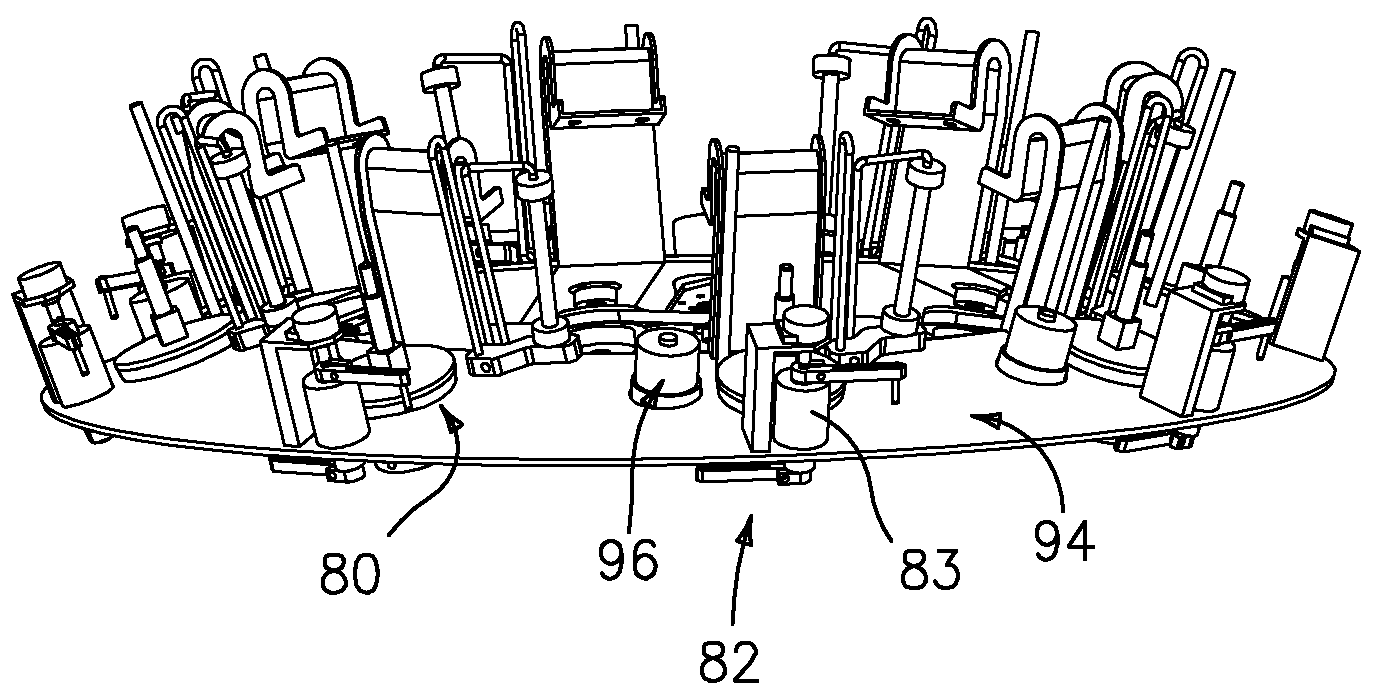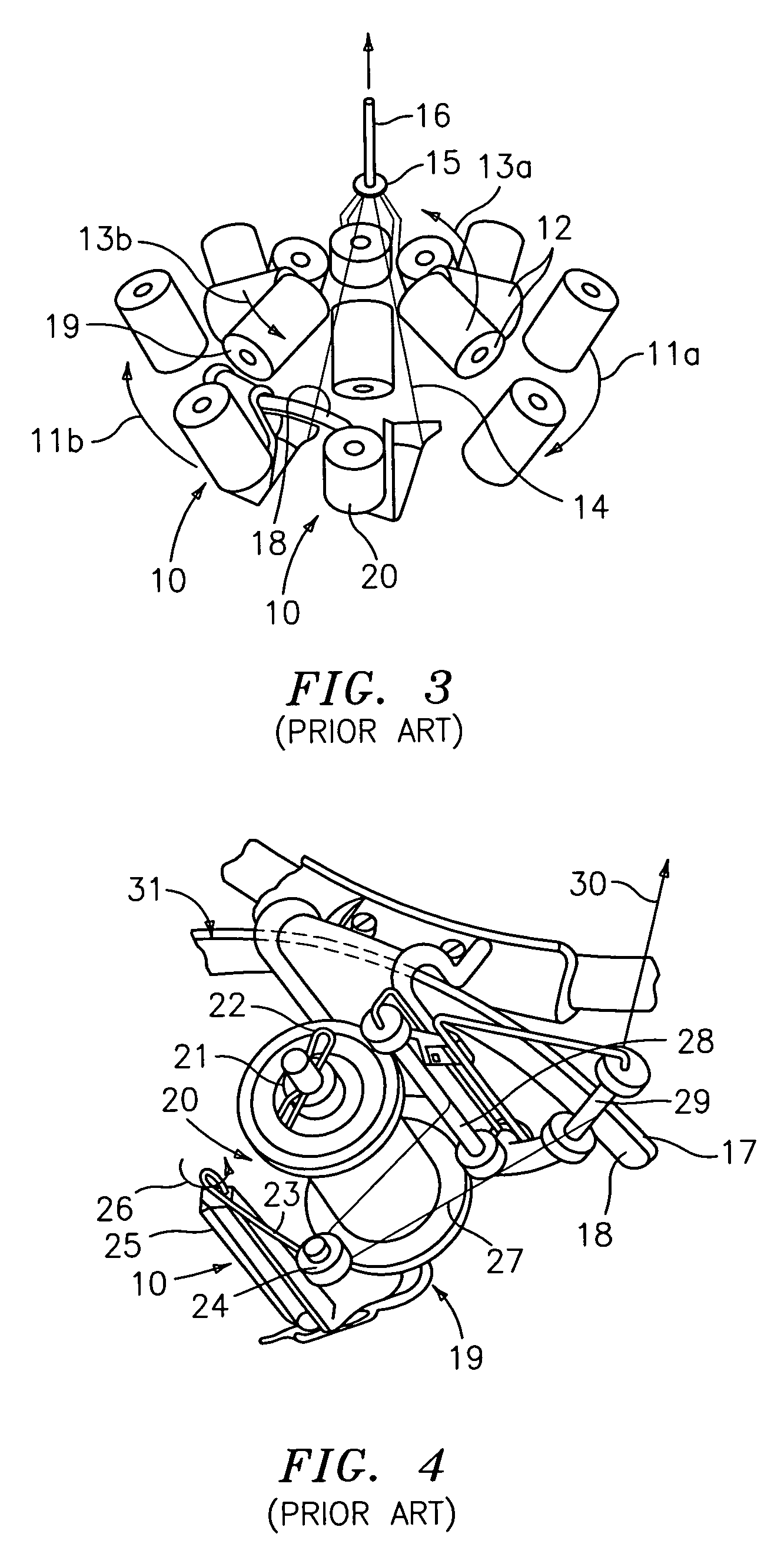Powered lower bobbin feed system for deflector type rotary braiding machines
a rotary braiding machine and lower bobbin technology, which is applied in the direction of braiding, textiles and papermaking, etc., can solve the problems of limiting the operating speed of rotary braiding machines, and achieve the effects of reducing unwanted stresses, reducing breakage, and improving operation
- Summary
- Abstract
- Description
- Claims
- Application Information
AI Technical Summary
Benefits of technology
Problems solved by technology
Method used
Image
Examples
Embodiment Construction
[0030]Applicants hereby incorporate by reference U.S. Pat. No. 1,423,587 entitled “YARN RETRIEVER FOR BRAIDING OR OTHER MACHINES” issued on Jul. 25, 1922. That patent, described in the Background section of the current application, was for the current Assignee's “Rapid Braider” rotary braiding machine. Current FIGS. 1, 7 and 2, including their unchanged reference numbers, are reproduced respectively from FIGS. 1-3 in U.S. Pat. No. 1,423,587. Legends however have been added for clarification.
[0031]The structure and operation of a typical Wardwell rotary braiding machine (e.g., the aforementioned Rapid Braider) is well known in the industry. It is also described in the instruction manuals available with such machines. One such manual, designated as “Wardwell Instruction Manual, Rapid Braiders,” has been provided as part of the Information Disclosure Statement associated with this application. FIG. 3 is an illustration adapted from a typical manual, and depicts diagrammatically the ope...
PUM
 Login to View More
Login to View More Abstract
Description
Claims
Application Information
 Login to View More
Login to View More - R&D
- Intellectual Property
- Life Sciences
- Materials
- Tech Scout
- Unparalleled Data Quality
- Higher Quality Content
- 60% Fewer Hallucinations
Browse by: Latest US Patents, China's latest patents, Technical Efficacy Thesaurus, Application Domain, Technology Topic, Popular Technical Reports.
© 2025 PatSnap. All rights reserved.Legal|Privacy policy|Modern Slavery Act Transparency Statement|Sitemap|About US| Contact US: help@patsnap.com



